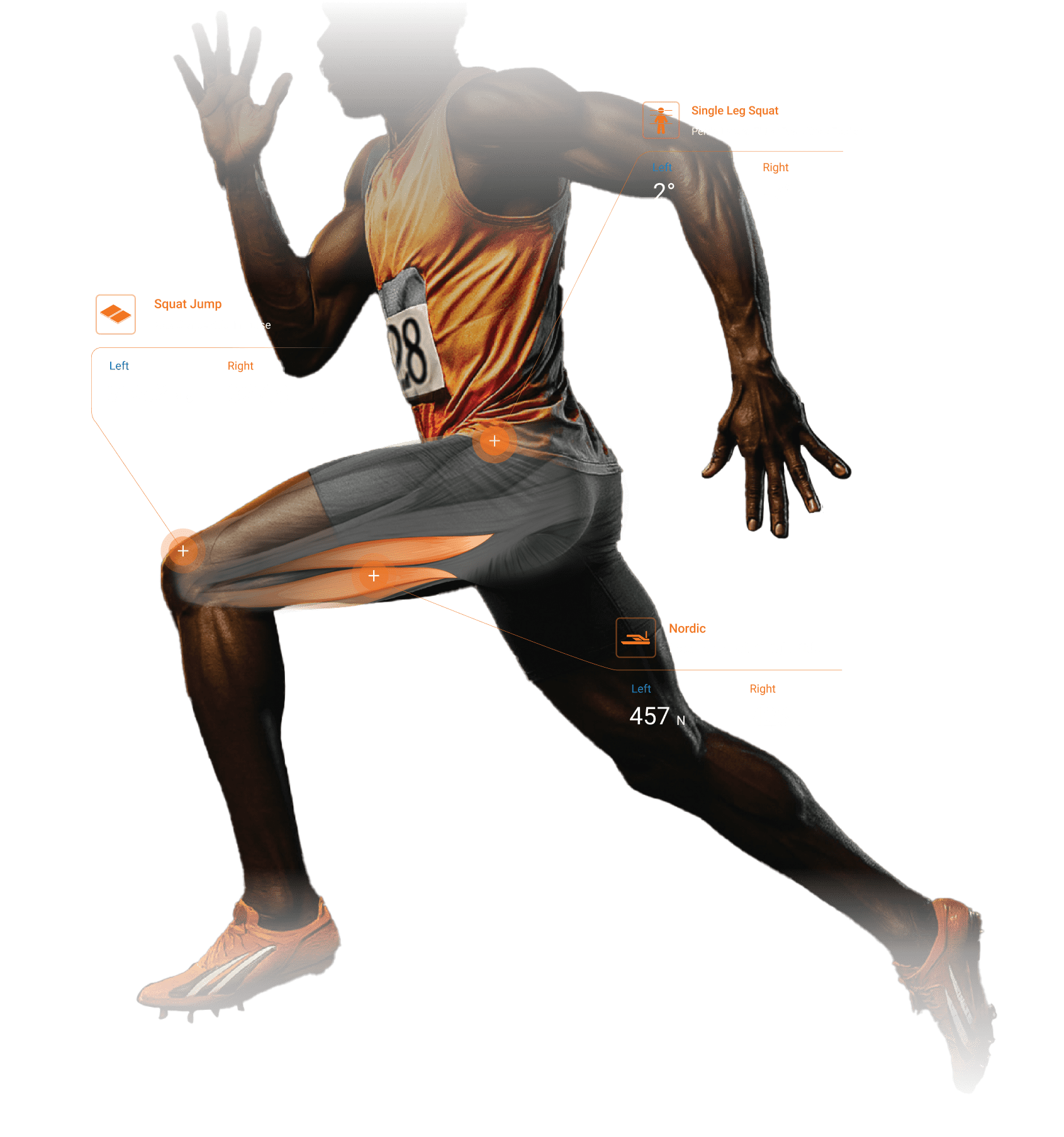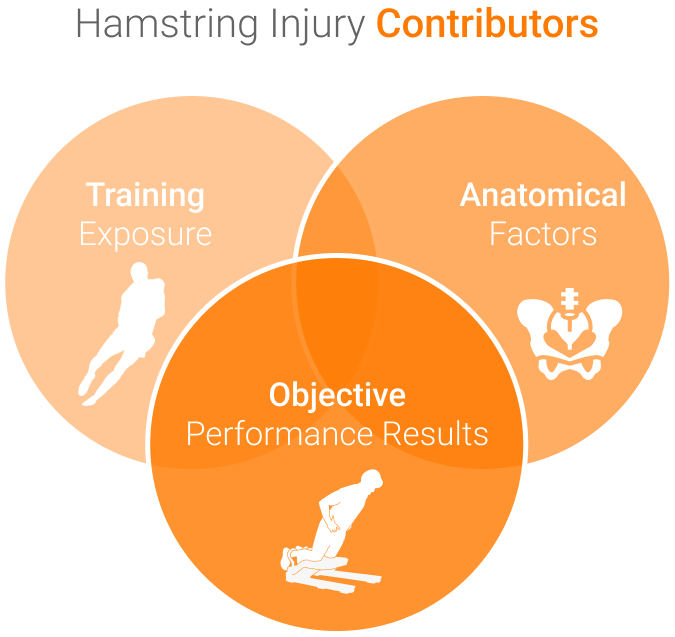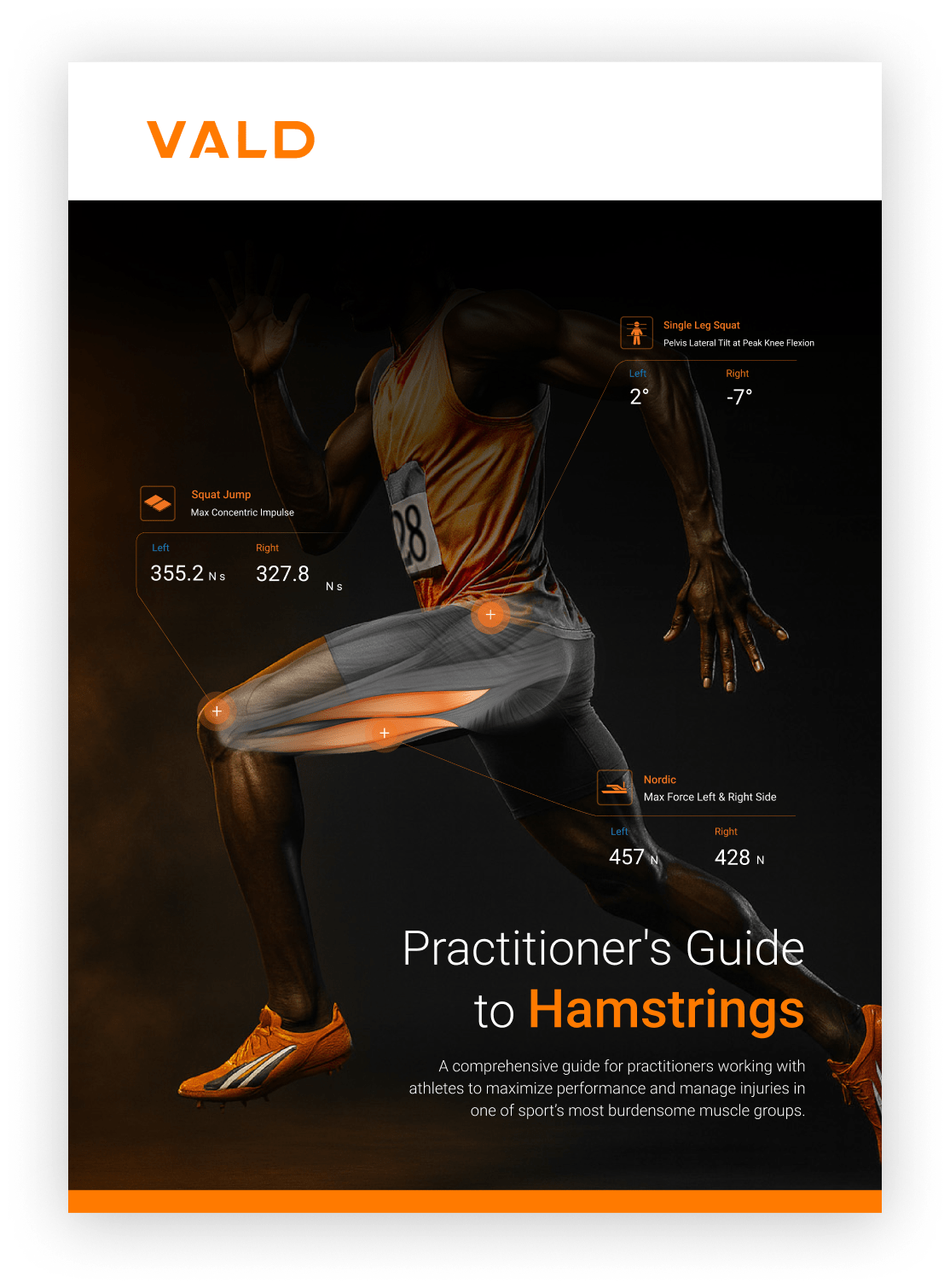FREE eBook
Practitioner’s Guide
Practitioner’s Guide
to Hamstrings
A comprehensive guide for practitioners working with athletes to maximize performance and manage injuries in one of sport’s most burdensome muscle groups.


Unpacking one of sport’s most important and challenging muscle groups: hamstrings.
Hamstring injuries remain one of the most common and burdensome injuries in sport – frequent, recurring and difficult to manage. This guide unpacks practical insights and objective testing strategies used by elite practitioners to help rehabilitate hamstring strain injuries.
This guide provides a data-driven roadmap for practitioners to take their hamstring rehabilitation process to the next level, accelerating their outcomes with cutting-edge technology.
Your hamstrings questions, answered.
- Q: What tests should I include during hamstring rehabilitation?
- Q: What factors contribute to hamstring injury incidence, recurrence and burden?
- Q: What tests help us detect and monitor progress during rehabilitation?
- Q: What is the current state of injury prevention for hamstring strains?
... and much, much more.

Our research has shown that tracking these metrics – hamstring maximal strength and rate of torque development – can help identify deficits in muscle capacity that may not be evident clinically but may be critical in reducing the risk of training or playing on a fatigued muscle.

Eccentric strength testing – most notably through the Nordic hamstring exercise (NHE) – plays a central role in evaluating neuromuscular performance. The resulting force-time curves provide key metrics, such as peak force and force-time impulse, which are used to assess inter-limb symmetry and benchmark performance against sport- and position-specific norms.

Ongoing monitoring of muscle function, load management and recovery metrics provides practitioners with actionable insights to help optimize readiness and reduce the risk of soft-tissue injuries, particularly hamstring strains, which remain highly prevalent in the sport.

Quantitative strength testing is not the be-all and end-all in hamstring evaluation, but it remains a major part of the process. When strength measures do match expectations, assessment expands to include jump testing, knee and ankle isometric pushes, soleus strength and hip musculature across all planes.

Hamstring injuries continue to represent a major burden in elite sport, particularly in football (soccer). Real-time feedback improves performance acutely and directs effort in the right direction.
Copyright VALD. All rights reserved. | Privacy Policy
